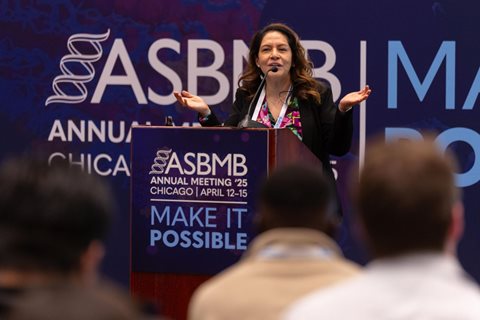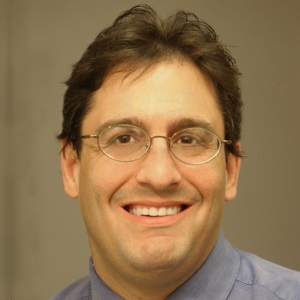How to write a teaching philosophy statement when you don’t have a lot of classroom experience
Asking for a statement of teaching philosophy from candidates who haven’t taught very much is kind of crazy, but the document is a standard requirement for an application package in academia. Having recently taken a new position and having written my second teaching statement after 16 years, I realize how difficult it is for someone to write his or her first teaching philosophy.
My first teaching statement, written when I was a postdoc, was clumsy and superficial, filled with declarative, unsupported statements. I wrote that I wanted to reach out to students without indicating how I would do that. I wrote about how I wanted to involve students as partners in learning but didn’t seriously address a method or approach to do so. I should have shown that this is a vocation, and I should have communicated that I have a passion for teaching and need to share this with students.
Fundamental elements of a strong teaching statement
-
Keep the statement personal and a reflection of who you are.
-
Show your interest in and passion for teaching.
-
Keep your philosophy focused on students.
-
Include your teaching history.
-
Include how you would use a couple of techniques to engage students and perhaps even an example (such as POGIL to teach cooperativity, case-based learning to teach kinetics or a flipped classroom to approach a difficult topic).
-
Use the education literature to talk about teaching effectiveness and take a scholarly approach to your teaching. Don’t make a laundry list of pedagogies.
-
Consider writing about building programs and majors.
-
Assessment of teaching effectiveness and student learning are important and often overlooked concepts that will get attention.
-
Think about learning objectives and outcomes.
-
Teaching laboratories are important. Find examples (from your observations and reading of the literature) that you may want to emulate or develop.
During my career, I’ve read hundreds of teaching philosophy statements, and many of the applicants have made the same mistakes I did. While most scientists are trained to think about research and have honed their curricula vita and research statements to be inventive, inviting and impressive, most are not prepared to create an inspirational teaching philosophy.
Here are some tips for those of you writing your first teaching philosophy statements:
Read the literature
Here are three good journals that cover current teaching methods:Identify a strong thread.
Consider taking the same approach you would take with a research statement: Find an overarching theme. Think of the statement as a development plan and not a chronology of your time as a teaching assistant. What kind of professor do you want to be? Keep your statement student centered. A hiring committee will want a candidate who can articulate a distinctive vision that implies passion for teaching.
Be fairly specific.
How will you engage students, create interesting and challenging courses, and maintain rigor in the classroom while maintaining student motivation? Writing about your need to push students is good and expected, but how will you do it? Will you assess your learning outcomes?
Include teaching laboratories.
Look at the opportunities you will have to teach various labs. Can you find examples of other programs to emulate? There are many examples that use different pedagogies in the teaching laboratory that you can include in your statement. Imagine if you were to create a new lab on your own. Look at the literature to see what concepts and skills should be included in such a lab. Use these references to discuss how you might create, for example, a research- or inquiry-based biochemistry laboratory.
Emphasize your experience.
A hiring committee will want to know about your experience, but don’t make a laundry list of what you did as a teaching assistant. Use specific experiences to emphasize your successes and how you overcame challenges. You might think of a specific example of how you mentored a student or a positive moment as a TA. This will help demonstrate your motivation to teach. If your teaching experience is limited, focus on what you want to do, your observations of what works and how you want to emulate strong professors. Remember that most applicants have been teaching assistants, and don’t linger on that experience.
Think like a scholar.
This is particularly important for applications to primarily undergraduate institutions. What kinds of pedagogical approaches have you used or will you consider using in class? You may not have used POGIL (process-oriented guided inquiry learning) or know much about flipped classrooms or even have an idea about David Lopatto’s assessment of learning gains by research, but you can certainly read about them and then write out your plan to use them. Explore the current literature. Would you ever consider creating an experiment or research proposal without reading critical literature? What would you think of someone who wrote about a research project that was based on what they experienced as a student or thought of off the top of their head? Such a research proposal would be considered nonsensical and not based on current scientific understanding and quickly ignored. The same can be said for a teaching statement that isn’t informed by current literature and teaching approaches.
Most importantly, show your passion.
The reason we teach is to mentor, help students realize their potential, help students grow and share our knowledge. Bring these elements to your document. Highlight that teaching is an important part of your career and that you are more than a promising researcher. Don’t forget that teaching happens in the classroom, in the halls and your office, and, very important, in your research laboratory. I can’t split my passion for teaching and research. In fact, they are often the very same thing. If you can communicate this in your teaching statement, you will be in good shape.
Know the learning outcomes
The American Society for Biochemistry and Molecular Biology and other organizations offer many resources you can use in your teaching philosophy statement. Don’t be afraid to mention such organizations as part of your plans. These are the sorts of comments that show your understanding of teaching and indicate to the committee you are as serious about your teaching as you are about research and other aspects of your career.
- The ASBMB Undergraduate Affiliate Network has information on its website snd its blog.
- The ASBMB accreditation program has the foundational principles of a biochemistry program and education.
- Other organizations, including the Council on Undergraduate Research, Project Kaleidoscope, and the American Association for the Advancement of Science, also offer information.
Enjoy reading ASBMB Today?
Become a member to receive the print edition four times a year and the digital edition monthly.
Learn moreFeatured jobs
from the ASBMB career center
Get the latest from ASBMB Today
Enter your email address, and we’ll send you a weekly email with recent articles, interviews and more.
Latest in Careers
Careers highlights or most popular articles

Upcoming opportunities
Calling all biochemistry and molecular biology educators! Share your teaching experiences and insights in ASBMB Today’s essay series. Submit your essay or pitch by Jan. 15, 2026.

Defining a ‘crucial gatekeeper’ of lipid metabolism
George Carman receives the Herbert Tabor Research Award at the ASBMB Annual Meeting, March 7–10, just outside of Washington, D.C.

Building the blueprint to block HIV
Wesley Sundquist will present his work on the HIV capsid and revolutionary drug, Lenacapavir, at the ASBMB Annual Meeting, March 7–10, in Maryland.

Upcoming opportunities
Present your research alongside other outstanding scientists. The #ASBMB26 late-breaking abstract deadline is Jan. 15.

Designing life’s building blocks with AI
Tanja Kortemme, a professor at the University of California, San Francisco, will discuss her research using computational biology to engineer proteins at the 2026 ASBMB Annual Meeting.

Upcoming opportunities
#ASBMB26 late-breaking abstract submission opens on December 8. Register by Jan. 15 to get the early rate on our Annual Meeting.

